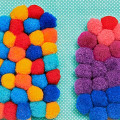Physical development in children is one of the most important aspects of their growth and development. It is a key factor in determining a child’s overall health and well-being, and plays a major role in helping them reach their full potential. In this in-depth overview, we’ll look at physical development in children from different angles, including how it affects them physically, mentally, and emotionally. We’ll explore what physical development is, why it matters for children, and how it can be encouraged. We’ll also discuss the different stages of physical development, and what parents and caregivers can do to help children reach their milestones.
So whether you’re looking for information on how to support your child’s physical development or just want to learn more about the topic, this article has you covered.
Physical Development in Children
is an integral part of growing up. It's important to understand physical development in children and recognize common milestones, potential problems, and tips for helping children reach their full potential. Babies start developing motor skills from the moment they are born. During the first year, they learn to roll over, sit up, crawl, and stand.These are all important milestones that should be achieved by around 12 months. Babies will also start using their hands to explore and pick up objects. As they grow older, they start to develop better coordination and control of their arms and legs. Toddlers continue to refine their motor skills.
By 24 months, they can walk and run, jump, climb stairs, kick a ball, and throw objects. Toddlers will also start imitating the actions of adults around them. This type of imitation is an important part of learning new skills and developing fine motor control. School-age children continue to develop and refine their physical skills.
At this age, they can usually balance on one foot and hop on both feet. They have better coordination and can catch a ball with one hand. School-age children may also start engaging in more complex activities such as riding a bike or playing team sports. It's important to recognize potential problems with physical development in children.
If a child is not achieving milestones at the expected time or appears to struggle with coordination or movement, it may be a sign of a developmental delay or other issue. It's important to seek professional help if you are concerned about your child's physical development. There are many ways to help children reach their full potential when it comes to physical development. Regular physical activity helps promote healthy growth and development, as well as providing an opportunity for bonding with family members or peers.
Parents can also help by providing toys that encourage motor skill development and helping children practice new skills in a safe environment.
Potential Problems with Physical Development
It's important to be mindful of potential problems with physical development in children. Delayed milestones, motor skill difficulties, and other issues can all be signs of a physical development issue. Parents should be aware of these potential problems and look for signs that their child may need additional help.Delayed MilestonesDelayed milestones are an important sign that a child may be having difficulty with physical development. Milestones such as crawling, walking, and running can all be indicators of potential issues. Parents should look for signs that their child is not reaching these milestones as quickly as they should.
Motor Skill Difficulties
Motor skill difficulties can also be a sign of physical development issues.These may include difficulty in activities such as writing, drawing, or playing sports. In some cases, physical therapy or other forms of intervention may be necessary to help a child develop these skills. It's important to recognize the signs of potential problems with physical development in children. With the right help, these issues can be addressed and children can reach their full potential.
Common Milestones for Physical Development
Physical development in children typically follows a predictable pattern, beginning with babies learning to lift and turn their heads, then progressing to crawling and walking.As children grow, they learn to throw and catch objects, build objects, and develop other skills. Here are some of the most common milestones for physical development in children:Babies: Babies typically learn to lift and turn their heads by two months. They may then start to roll over, sit up, and crawl by six months. Most babies are able to walk with assistance by 12 months.
Toddlers:
Toddlers can learn to climb stairs, jump, run, and kick a ball by 18 months.They will also start to use fine motor skills such as picking up small objects or drawing with a crayon.
School-Age Children:
By age five or six, children can usually throw and catch a ball, hop on one foot, ride a tricycle, and even write their name. School-age children can also learn to skip rope, swim, and play team sports.Helping Children Reach Milestones:
Parents can help their children reach each physical milestone by providing a safe environment for exploration and physical activity. Activities such as playing catch or hide-and-seek can be great ways to help kids build their physical skills. Additionally, parents should ensure that their children get enough sleep and eat healthy meals to ensure optimal physical development.Tips for Supporting Physical Development
Physical development in children is an important part of growing up.To ensure that children reach their full potential, parents and guardians should provide tips for supporting physical development. Regular exercise, healthy eating, and providing appropriate toys and activities are some of the best strategies for supporting physical development in children. Regular exercise is essential for physical development in children. Incorporating physical activity into a child's daily routine will help them stay active and healthy.
This can include activities such as walking, running, playing tag, or even taking family trips to the park. Eating a balanced diet is also important for physical development in children. Eating a variety of fruits, vegetables, lean proteins, and whole grains will help support a child's growth and development. Encouraging children to make healthy food choices will help them form healthy habits that will last a lifetime.
Providing appropriate toys and activities can also be beneficial for physical development in children. Toys such as balls, jump ropes, hula hoops, and scooters can help children stay active and engaged. Additionally, activities such as dancing or swimming are great ways to get children moving and having fun. It's important for parents and guardians to understand the importance of physical development in children.
By providing tips such as regular exercise, healthy eating, and providing appropriate toys and activities, children can reach their full potential. Physical development in children is essential for their growth and development. Common milestones to look out for include being able to sit up, crawl, and walk. Parents should also be aware of potential problems with physical development, such as delayed milestones, and how to seek help if necessary. Finally, parents can help their children reach their full potential by providing a supportive environment and engaging in activities that encourage physical development. It's important for parents to understand physical development in children and to be proactive in helping them reach their full potential.
With the right support and guidance, children can reach all their physical milestones and grow into healthy and happy adults.



Leave Message